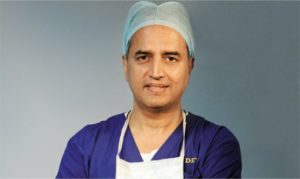Essexuality is a sexual identity rather than a biological entity. Asexuality in the world of biological reproduction means that a single organism can produce offspring similar to a parent. But in the context of human sexuality, it means that a person feels no sexual attraction. The important thing to remember when trying to understand asexuality is that people who identify as such are not different from you, apart from the fact that they are more accurate, do not experience sexual attraction.
Asexual people can become sexual later in life, and this does not mean that they were not asexual earlier. Likewise, sexual people can become asexual. About 4-5% are considered asexual in India, however, more research needs to be done to validate it. Essexuality is a sexual orientation which means that no person feels any sexual attraction to people of any gender. However, a person who identifies as asexual may still choose to have sex, still be in love, still be involved with or marry a romantic partner, and still have normal relationships. May be attached to. Asexuality does not describe what a person wants to do, but rather describes how a person feels.
Asexual people have emotional needs, feel attraction towards others, and may even feel aroused: they don’t just feel sexual attraction.
Asexuality is not the same as having low libido, which may be due to medical or health issues, nor is it similar to suppressing one’s sexual desires or past sexual abuse. As with any sexual orientation, the label asexual is a generalization that does not explain or represent everyone who identifies it as such. All humans are unique and individual, and sexual orientation exists on a spectrum of needs, desires, interests, and attractions.
Abstinence is a deliberate choice to refrain from sexual activity, while celibacy is a deliberate choice to avoid sexual activity and marriage (or relationships such as marriage). These choices can be made for religious, philosophical, moral or other reasons. Asexuality is a lack of sexual attraction, but not necessarily a lack of sexual appetite (libido).
This means asexual people can be – Abstinent or celibate.
Sexually active through masturbation.
Sexually active with a partner.
Essexuality is a sexual orientation that is different from heterosexuality, homosexuality, bisexual, pansexuality, and other orientation. However, asexuality also has nothing to do with biological sex, gender identity or gender expression. And being asexual does not mean that you are fragrant, which means that one person does not feel any romantic attraction to others.
Asexual people often partake in romantic partnerships or relationships, but whether a person is open to physical or sexual intimacy depends on the individual. But dating doesn’t necessarily require physical or sexual interaction, and two people can develop a strong emotional or romantic relationship with or without a sexual element: intimacy is much more than just physical touching or sexual activity.
An asexual partner may or may not be open to sexual activity, so it’s important to communicate so that everyone involved is on the same page. Feeling sexual pleasure is different from feeling sexual attraction, and some asexual people can enjoy sex.
Conversely, some asexual people are not interested in sex at all, and will not be open to exploring a sexual relationship. Asexuality isn’t a choice or preference any more than heterosexuality and homosexuality are. Asexuality isn’t a problem or disorder, and it isn’t caused by abuse or violence. People who identify as asexual don’t need to be fixed and aren’t going to change based on the person with whom they’re in a relationship.
Some people who are asexual are not interested in romantic relationships, and may just be open to close friendships or non-sexual romantic relationships.






















